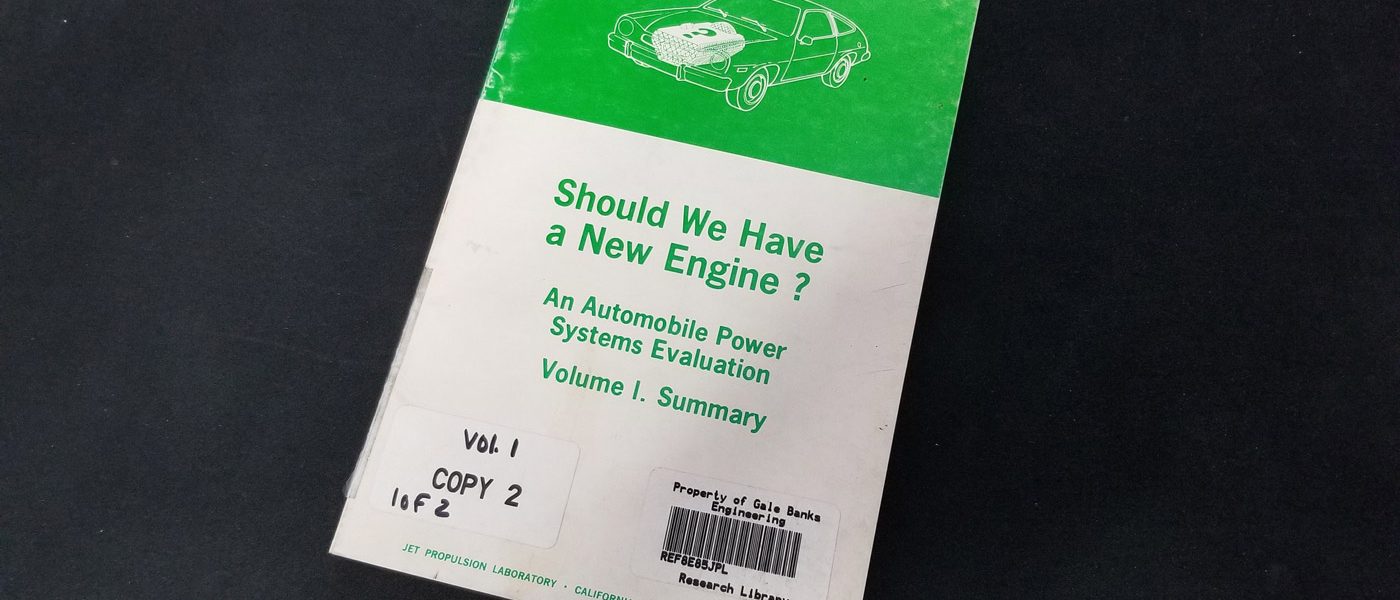1973 thru 1975 Interest in Diesel Begins
In 1973 Banks was hired to serve as consultant and vendor to JPL/Cal Tech for a Future Engine Study that was funded by a $500,000 grant from the Ford Foundation (Ford Motor Company). The concept of the study was first expressed by Lee Iacocca, then President of Ford, in a testimony before the Senate Air and Water Pollution Subcommittee in May of 1973. Ford Motor Co. wanted an assessment of the long-term powerplant options to provide a balanced, independent view. Ford chose JPL to do the study.
In 1975 the study of future engines was published under the title “Should We Have a New Engine?” This report prompted Banks to take a closer look at the attributes of the diesel engine. Being a futurist, he quickly recognized that the efficiency of the existing infrastructure of the “oil-burner” made it a clear winner among some of the other proposed concepts.
At the top 2 spots of the recommended engine types were the Brayton and Sterling engines, but both had an estimated 5 to 10 years (at the time) speculated being needed to mature before being able to deliver on their promise for eliminating the automobile as a source of urban air pollution, reducing fuel consumption, and being saleable at a cost that can be recovered by the fuel savings to the owner. Other engine types reviewed were: UC Otto, SC Otto, Diesel, Brayton, Rankine, Stirling, Electric, and Hybrids. Diesel ranked 4th, while Electric and Hybrids came in 7th and 8th respectively.

